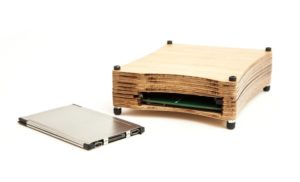Getting Started with a Gnu/Linux Installation:
This is an outline and report of recent experiences with installation of a GNU/Linux system on a laptop. The steps would be the same for any computer, but most of the NMGLUG group are now using and bringing laptops to meetings.
1) Get a disk or usb with an installation ISO; there are many choices. In NMGLUG we have had Debian Stretch 9.4, Ubuntu 18.0, Xubuntu 16.04LTS and Peppermint 8 as recent installs. All of these were downloaded on a working computer and copied as ISO images to a flash drive or DVD.
2) Insert and boot from the ISO media and do the install, choosing partitioning and encryption or no encryption. If in doulbt accept the default partitioning. Installation from the ISO is just the start for the process, but in our several cases installation worked. A restart and login are required to do a little testing of keyboard and some applications. This helps the user get a feel for the menus and any gaps in the hardware drivers. For the Ubuntu 16.04LTS and Debian 9.4 we needed to use a usb wireless dongle with a free driver to download the necessary proprietary driver for the built-in Broadcom wireless card. The Peppermint 8 install on a 2004 laptop ran slow and needed removal of the ‘apt-xapian-index’ application which was monopolizing cpu cycles. Further issues arose with the Celeron processor in this older machine, which seems unable to keep up with the needed work, despite a rating of 2.8 GHz.
3) Get the Updates to bring in any improvements in the basic software: This can be done via Update Manager, Synaptic Package Manager, “Software Center” or the commandline. Ubuntu does not include Synaptic, so the easiest is to open the Updater and select “Check for Updates” or in the “Software” application open and wait while it tallies the software and looks for updates, then look for the “Updates” tab and install them. In Synaptic there is a “check for updates” button and then the “Apply” button, once the updates have been loaded. The retrieval of the updates may take two to five minutes and may be anywhere from 200MB to 600MB in size depending on the age of the installation media and the number of updates and rewrites from the software maintainers. Then reboot and put the machine to use for a few basic functions. The browser should work, and office suite and photo display will work. DVD’s won’t play and some music files may need additional codecs. Some codecs are proprietary and while free of cost, are not truly free for source code or sharing. But there are solutions so that DVD’s and MP3’s will play on any current installation, as long as the hardware is capable. (I cannot recommend using a laptop as old as 2004, unless you want constant problems.)
4) Tweak or “tune” the system: Pepermint 8 required removal of the “apt-indexer”, as above, and removal of Samba as a potential problem. I added: sox, lame, fancontrol, vim, vim-runtime, gnome-games, aisleriot and stellarium. I removed the SSB links for games and Gmail. The SSB is “Single Site Browsing” which usese a locked browser to go to one site only and hides all other browser functions. The default browser was a problem for the Celeron CPU/GPU, so I added the elinks browser. The elinks browser works readily in a terminal, thus cutting down on the load for the gpu. Perhaps a graphics problem with the Radeon builtin gpu? The users of the Ubuntu 18.0 and Xubuntu 16.04 will undoubtedly add and remove some different items. Newer machines may not even require removals as hard drives are larger than the 60 GB drive in the old laptop.
As a part of tuning, I take a look at the settings for the automatic updater, usually I want a weekly notification to update. In a newer edition like Ubuntu 18.0 a two-day update cycle might be good for a few weeks, as the software is improved by the developers in the early release period. Set the Update interval so it does not interfere too often with actual use of the machine.
There are enough applications to allow anyone to select the ones suited to one’s areas of interest. Many Gnu/Linux applications are adapted to user modification and adjustment so you can install and then fine tune the application to make it work the way you would like. I found adjusting the Terminal color scheme improved the readability of elinks, for example.
5) Testing and use: Experience with the older laptop and Peppermint and Debian revealed a good enough wireless and audio setup which allowed streaming radio from the Internet via QuodLibet and slow video on YouTube. The latter was not a surprise, but the ability to play a standard DVD adequately was a nice bonus. The SSB/online games we balky and thus removed, the installed games run well if not added to other simultaneous tasks. So there is some reason not to rely on an older processor and motherboard if you can help it. The Peppermint team is focused on having the Internet be the source for applications and storage – not a good approach for my hardware, but I will keep testing for a while. A second hard drive with Debian 9.4 for the older laptop runs a bit better, but still has the slowness in browsing.
6) Do Something! Once the operating system is loaded, updated, tested and tuned it is time to do some work or play. So use the applications, look at all the settings in the display and functions. Pick colors and icons that are convenient and suit your taste. Explore the menu “tree” so you know where to locate settings and applications.
I know GNU/Linux on a computer lets me get to the work and play I want in my computing experience. I think it will do that for you as well. Thank you, Ted P.




